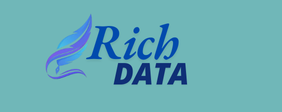Only 200 pages are index so we are interest in achieving that if that is our goal.
301 Content permanently rirect to another URL We use it to pass authority and history when URLs change.
302 Temporarily rirect content less than 1 day
Occasionally we may be interest in using them, but it is a code that we will generally avoid.
404 Content not found or non-existent It is a code that we avoid using unless our intention is to delete content.
410 Content remov
It will have the same application as 404, but emphasizing the fact that it has been remov.
500 Unidentifi internal error They don’t help us, so we have to be careful with them and prevent them from happening. Now, moving from the basics of the Internet to On-Page SEO but still from those guidelines that Google does follow paytm database when indexing, we would find.
503 (or 429)Server overload
(or with too many simultaneous requests)
It tells Google about loading problems that we should try to avoid, although the error itself is not a problem.
So, in terms of indexing, what we are going account-based marketing: how does this strategy work? to be interest in is that the server returns a Status Code 200 (unless we have a URL rirect to another one to avoid duplicate content). But how can we see the response status code of our pages?
PRO TIPS:
Through Chrome’s Network view, which you access via (More tools > Developer tools > Network), you can see the status of the page you are on.
By downloading the “Rirect Path” extension from the Chrome Web Store, you can also familiarize yourself with the server response code for each page.
And finally, through Crawlers or Trackers like Screamfrog you can download hundrs of URLs from a site and, among other things, observe these snbd host codes to detect incidents.
With these tools, each
One more advanc than the other, you can check if there is any problem in the status of your pages that would prevent them from being index.

